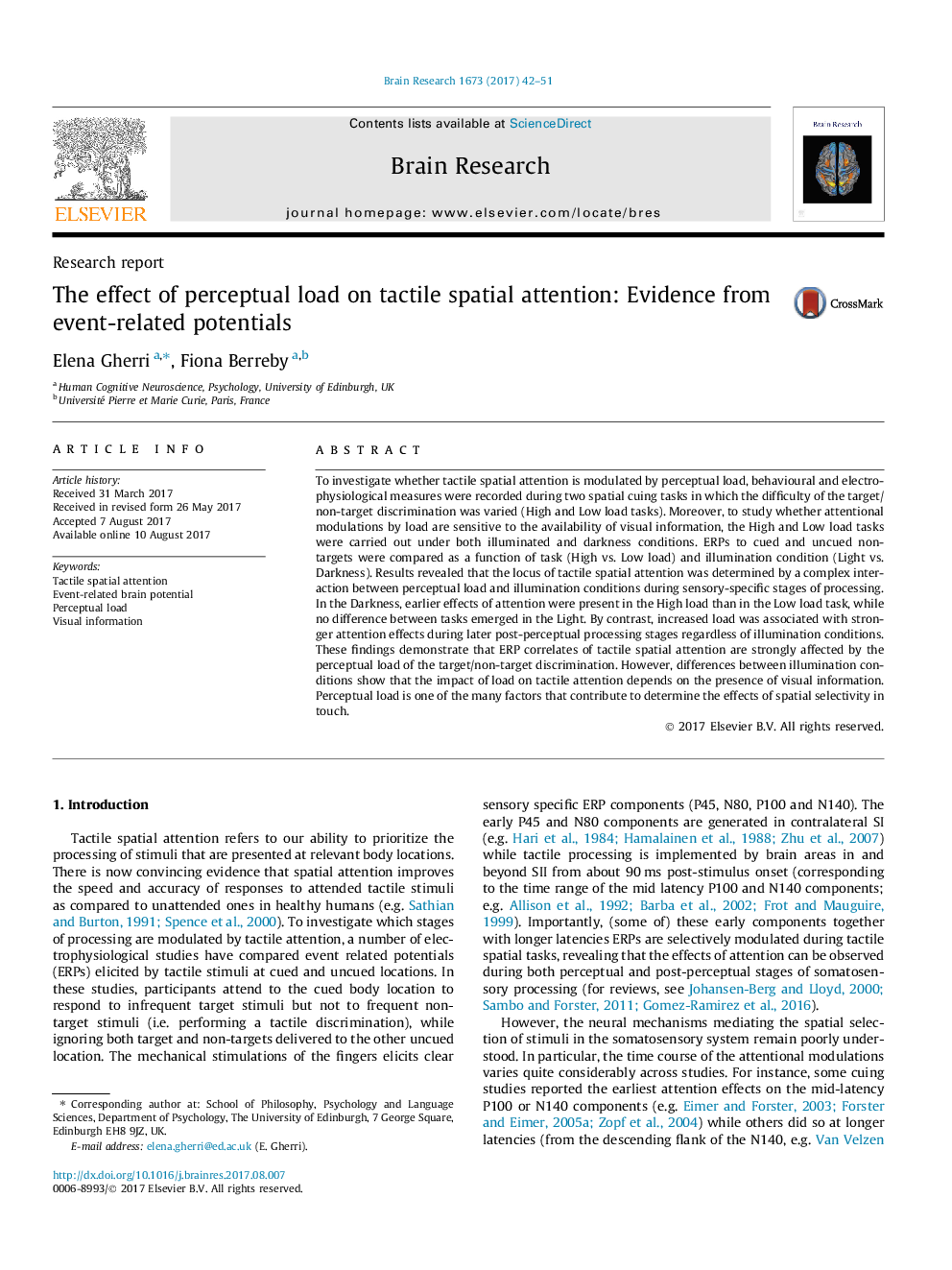| Article ID | Journal | Published Year | Pages | File Type |
|---|---|---|---|---|
| 5736520 | Brain Research | 2017 | 10 Pages |
Abstract
To investigate whether tactile spatial attention is modulated by perceptual load, behavioural and electrophysiological measures were recorded during two spatial cuing tasks in which the difficulty of the target/non-target discrimination was varied (High and Low load tasks). Moreover, to study whether attentional modulations by load are sensitive to the availability of visual information, the High and Low load tasks were carried out under both illuminated and darkness conditions. ERPs to cued and uncued non-targets were compared as a function of task (High vs. Low load) and illumination condition (Light vs. Darkness). Results revealed that the locus of tactile spatial attention was determined by a complex interaction between perceptual load and illumination conditions during sensory-specific stages of processing. In the Darkness, earlier effects of attention were present in the High load than in the Low load task, while no difference between tasks emerged in the Light. By contrast, increased load was associated with stronger attention effects during later post-perceptual processing stages regardless of illumination conditions. These findings demonstrate that ERP correlates of tactile spatial attention are strongly affected by the perceptual load of the target/non-target discrimination. However, differences between illumination conditions show that the impact of load on tactile attention depends on the presence of visual information. Perceptual load is one of the many factors that contribute to determine the effects of spatial selectivity in touch.
Related Topics
Life Sciences
Neuroscience
Neuroscience (General)
Authors
Elena Gherri, Fiona Berreby,
